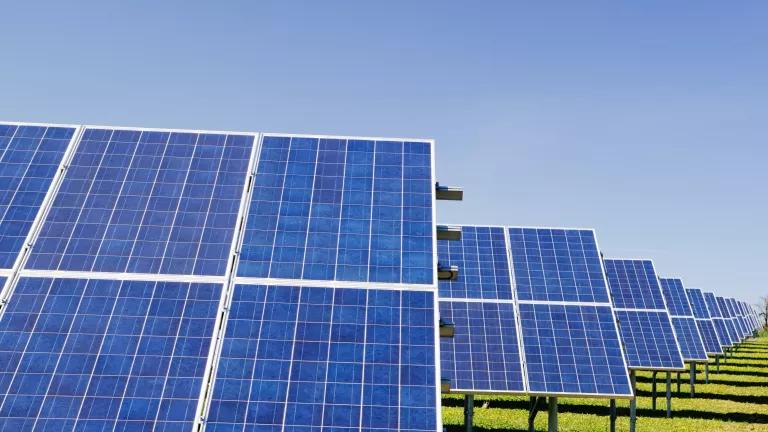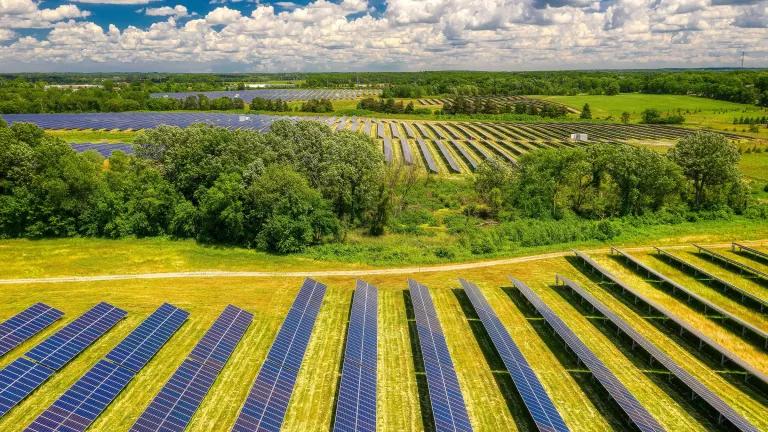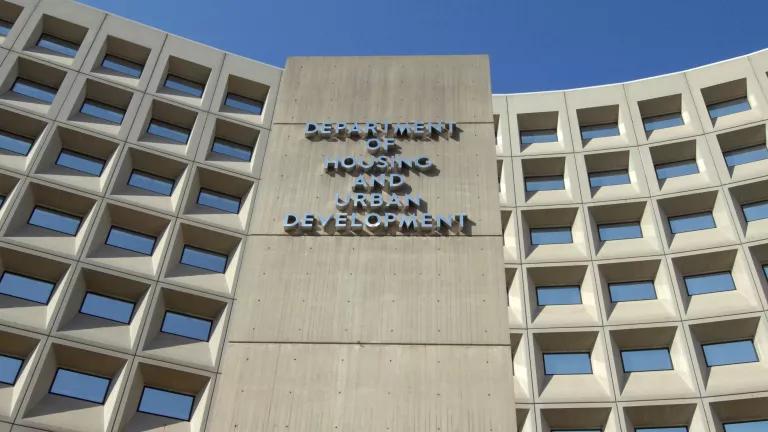New Reports Show RGGI Protects Kids’ Health and Saves Money
Two new reports show the tremendous benefit of the Regional Greenhouse Gas Initiative (RGGI)—a Northeast and Mid-Atlantic region power sector program—and how it’s paying dividends for the climate, children’s health, and families’ finances.

Photo by Zbynek Burival on Unsplash
Two new reports show the tremendous benefit of the Regional Greenhouse Gas Initiative (RGGI)—a Northeast and Mid-Atlantic region power sector program—and how it’s paying dividends for the climate, children’s health, and families’ finances.
The first study, led by a team of researchers from the Columbia Mailman School of Public Health and other institutions, shows that by lowering harmful particulate pollution, or soot, from power plants, RGGI has helped avoid hundreds of asthma attacks, more than 100 pre-term births, and dozens of cases of low birth weight and autism spectrum disorder in kids—health benefits quantified at between $191 million and $350 million. The second report shows that RGGI-funded investments in clean energy measures like energy efficiency and community solar programs in 2018 alone will save families and businesses in Northeast and Mid-Atlantic states more than $2 billion on their energy bills over the coming years.
This new research adds to a growing body of literature showing that as we look to take necessary steps to tackle the climate crisis, smart policy models like RGGI can help us do so cost effectively and with numerous co-benefits.
RGGI Explained
RGGI is a 12-year old regional power sector program in the Northeast and Mid-Atlantic U.S. that currently includes 10 state participants—Connecticut, Delaware, Maine, Maryland, Massachusetts, New Hampshire, New Jersey, New York, Rhode Island, and Vermont. Under the program, participating states have collectively committed to cut power plant carbon pollution to help tackle climate change.
RGGI works by requiring owners of coal, gas, and oil-fired power plants to purchase “allowances” for each ton of carbon pollution that they emit. The number of allowances made available decreases over time, which ensures that pollution comes down. The states reinvest the proceeds from allowance sales into clean energy measures like community solar and energy efficiency programs, which help both lower pollution further and lower energy bills, saving families and businesses money.
RGGI’s Impressive Benefits
Since RGGI took effect in 2009, numerous studies have confirmed the program’s significant benefits to the environment, public health, jobs, and the region’s economy.
Emissions data from the states show that carbon pollution from RGGI-covered power plants has now fallen in half since RGGI began. While not attributable solely to RGGI, previous research by Duke University researchers concluded RGGI was responsible for roughly half of observed emissions declines. A 2019 Acadia Center analysis further concluded that power plant pollution had declined nearly twice as fast in the RGGI states as in other states since the program began.
Three comprehensive economic analyses of RGGI’s first nine years (2009-2017) show that RGGI has helped achieve these emissions reductions at a net economic benefit to the region. These independent assessments by the Analysis Group found that RGGI has contributed $4.3 billion in economic growth to the region and created 45,000 new job-years of work (a job-year equals one year’s worth of full-time employment for one person) in areas like installing solar panels and performing home energy retrofits.
RGGI has also provided significant health benefits and energy bill savings, as further confirmed by the two newly released studies.
The Columbia children’s health study adds to and fills a gap in previous research which looked primarily at RGGI’s health benefits to adults. The earlier research showed that by transitioning to cleaner forms of energy, RGGI has not only helped reduce carbon pollution but has helped reduce other health-harming power plant pollution as well, with lifesaving and life-improving results. The Columbia analysis extends this research to look at additional benefits that RGGI’s pollution reductions have had in improving children’s health and reducing childhood diseases. Combined with the earlier research, the new study shows RGGI provided an estimated $3.2 billion to $8.6 billion in health benefits during the program’s first six years (2009-2014) alone.
Importantly, many of these health benefits to both children and adults have been realized in neighboring states, including Pennsylvania, Virginia, and West Virginia, as well as in Washington, D.C., as a cleaner power sector in the RGGI states also means less cross-border pollution. These health benefits offer a tantalizing picture of what more could be achieved, both in the states already benefiting from RGGI and in others, with even greater state participation in the program.
The second newly released report, from the RGGI states themselves, provides new data on where RGGI investments have been made and the benefits of these investments. The report updates the RGGI investment picture through 2018 and shows that the participating states continue to invest the majority of RGGI funds in bill-lowering energy efficiency and renewable energy measures, as well as other programs to reduce climate pollution and provide energy bill assistance to residents. All told, investments of $2.5 billion under RGGI through 2018 will save families and businesses more than $12 billion on their energy bills—an impressive return on investment!
Growing RGGI’s Impact
The RGGI program has been so successful that new states are now looking to join. Under state legislation and new rules adopted this year, Virginia will become RGGI’s 11th state in just a few months, on January 1, 2021. Pennsylvania is also in the process of developing state rules to participate in RGGI by 2022. As new research continues to reveal RGGI’s benefits, it builds the already strong case for these and other states to join RGGI or develop similar programs.
This new research also amplifies the importance of the RGGI states’ ongoing commitment to review and update the program, which has enabled RGGI to provide more than a decade of impressive outcomes. The RGGI states are due to begin their next regular comprehensive program review process soon, and should take the opportunity to launch this review before the end of this year, with a goal of continuing to strengthen RGGI and ensuring even greater future health gains, particularly in those communities most overburdened by pollution.
Finally, the updated RGGI investment data show the importance of states continuing to adopt best practices in their RGGI implementation, including by investing RGGI allowance proceeds in areas like energy efficiency and renewable energy that provide environmental, health, and economic benefits to their state residents.


